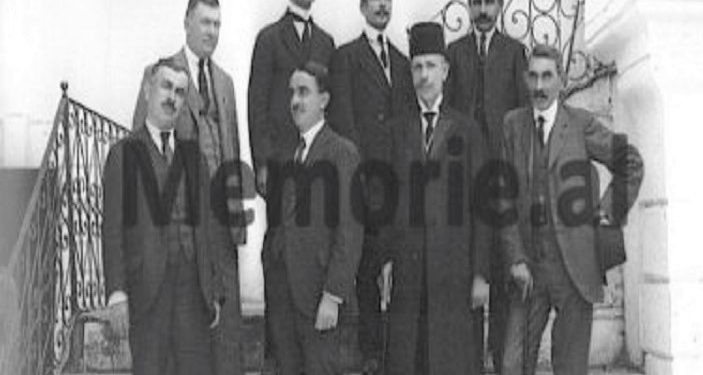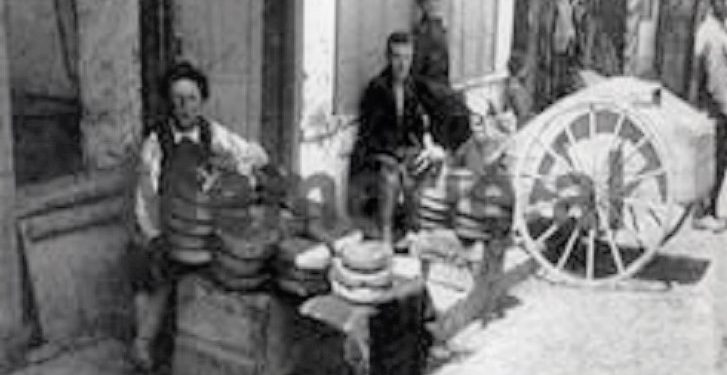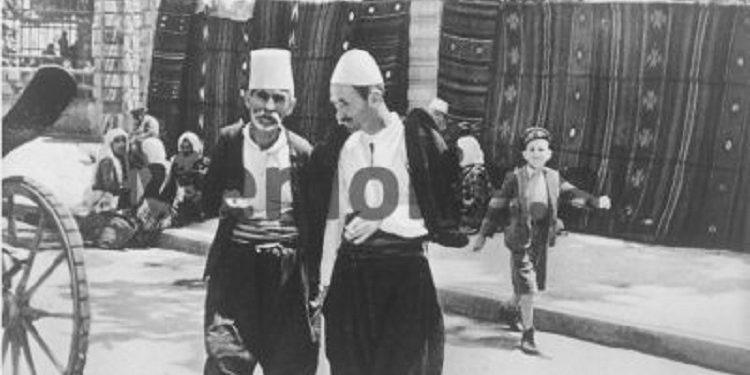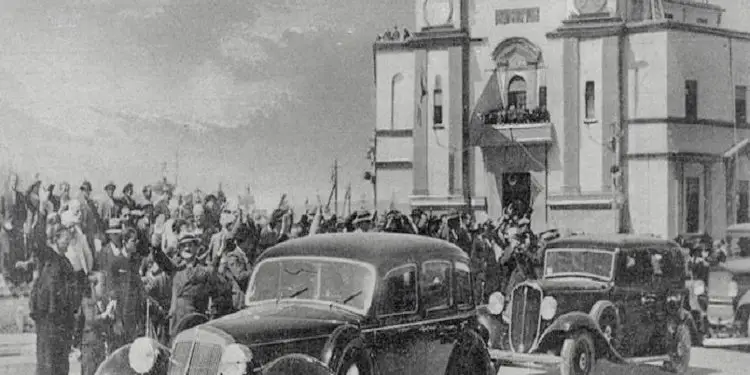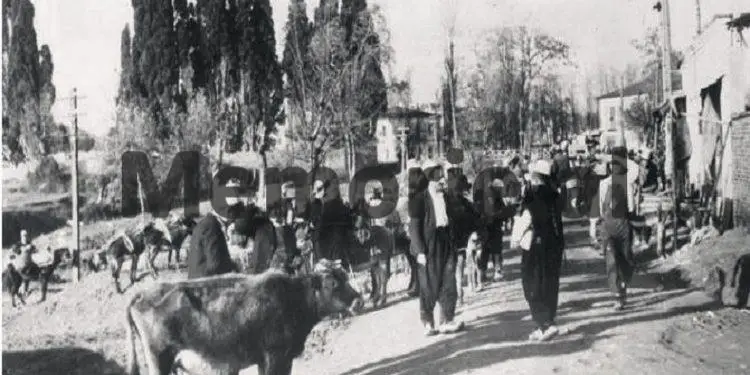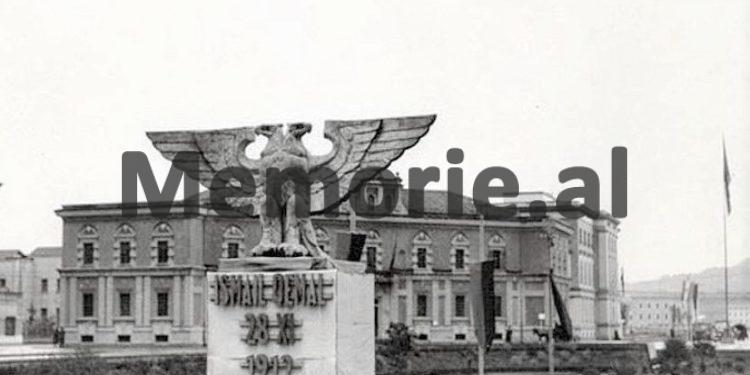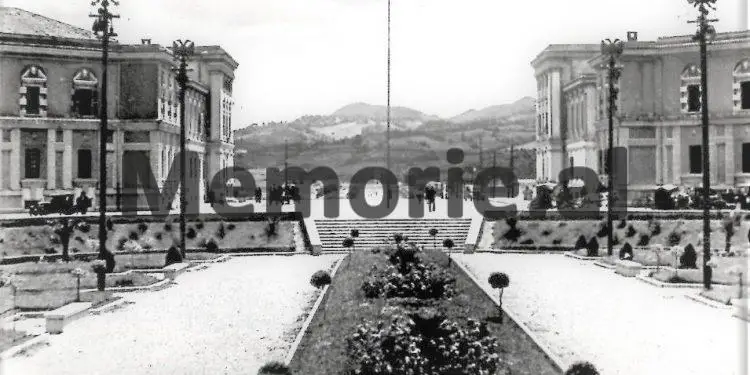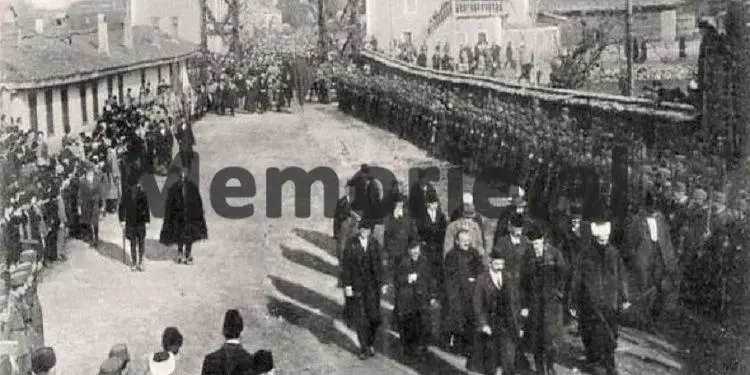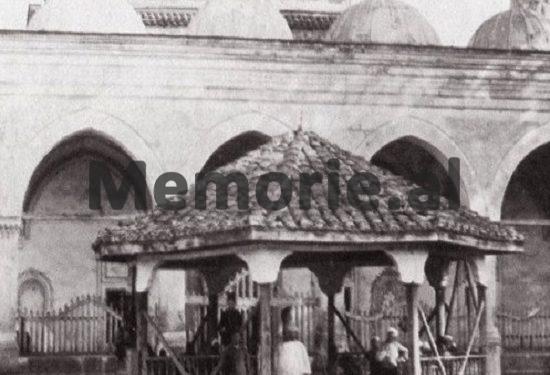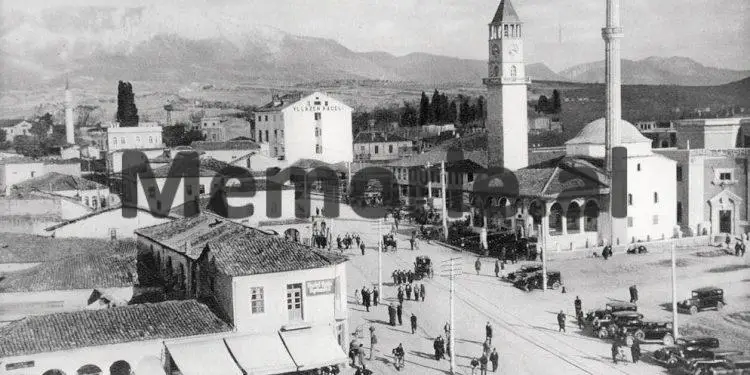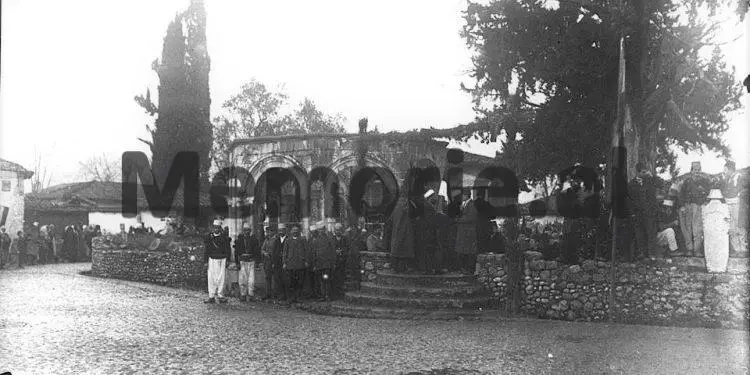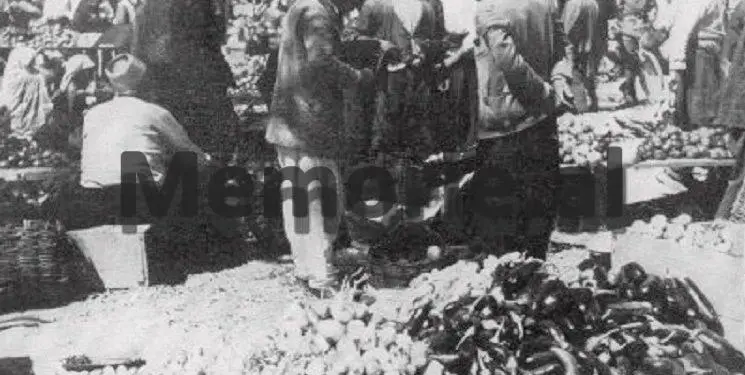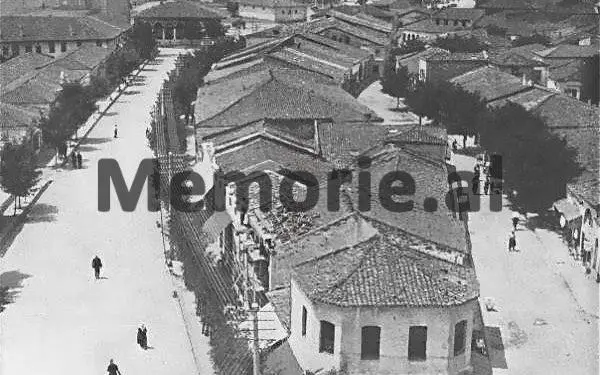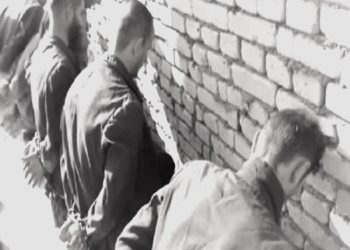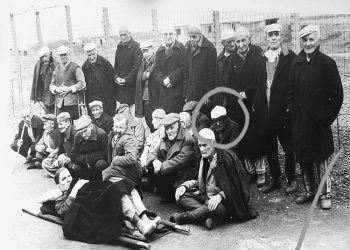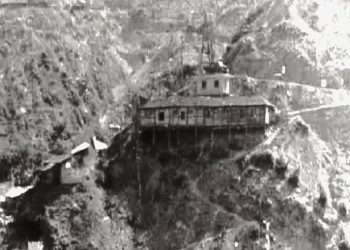Dashnor Kaloçi
Memorie.al /publishes the unknown report of the Romanian journalist Dr. Vlad Banateanu, correspondent of the newspaper “Cuvantul” of Bucharest, who visited the Albanian capital, Tirana, in 1933 and wrote the article entitled: “Tirana, the city and the life of the capital of Albania” (originally published in the newspaper “Cuvantul”) , which was later translated by the well-known publicist and translator Anastas Plasari and was published in the newspaper “BESA” of Tirana, on November 4, 1933. This report, where the Romanian journalist describes and talks in detail about the life of the capital Albanian of that time, reflecting both the development of, as well as some of its dark sides, we are giving it in full in this article, staying correct even to the literary language of that time, with which it was published in the newspaper in words.
In the early 1930s, the Albanian capital, Tirana, under the special care of the governments of that time and personally King Zog, began to form its physiognomy, as a modern city of European proportions. This was made possible thanks to the contribution and work of some of the foreign architects and urban planners, well known in Europe (such as the Italian Brazini), who agreed with King Zog to design and build in the Albanian capital streets and wide squares, gardens and green parks, blocks with luxury villas, mansions for state administration employees, etc. All these constructions that were made at that time, turned Tirana into a place of pilgrimage for many foreign tourists and journalists, who with their writings and reports made the Albanian capital even more known in the eyes of foreigners. One of those journalists who visited Tirana and many cities and provinces of Albania at that time, was the Romanian Dr. Vlad Banateanu, who worked for the Bucharest-based Cuvantul newspaper.
His report: “Tirana, the city and the life of the capital of Albania” (originally published in the newspaper “Cuvantul”), was translated by the well-known publicist and translator Anastas Plasari and was later published in the newspaper “BESA” of Tirana, on November 4, 1933. This report, which speaks with optimistic notes about the Albanian capital of that time, we are giving in full in this article, staying correct to the literary language of that time, with which it was published in the newspaper in words.
“Tirana, the city and the life of the capital of Albania”
It does not take a few steps from the plateau of Tirana and reaches the Royal Road, which is a modern road. From here you can see the old mosque. In Tirana you will find European restaurants, cafes and confectioneries in which people stay until 12 at night consuming baklava and kadaif. Women do not enter cafes because these are reserved for men only. When my friend and I went to cafes, like any European, it was an event: Almost everyone got up to look at us better. Family life continues to be limited and occupied by old superstitions and traditions from which the new generation is barely moving. Many middle- and lower-class women continue to wear the veil, not only Muslims but also Christians. Hotels are generally clean although they do not have our own comforts (except good hotels). Despite these, in every hotel room you will find new furniture such as mattresses, etc. Only one thing is missing and you can see this many times among us; running water between rooms. Sewerage is now being built in cities. This lack of good water regulation stems from the fact that it has to be brought from distant places, from the mountains it costs a lot. By the time this issue was reserved there were many more to finish. Therefore, in modern Tirana, what impresses you is to see water loaded on animals, especially when it does not rain for a long time, the wells run dry, and then the water sellers are happy. When in Tirana and other cities there will be enough water equal to electricity, many changes will be made. Only in one hotel did I find running water in a room. I believe that by today most hotels will have settled the issue of water and in this way a difficult memory of the Orient will disappear. Everywhere in the Orient you can smell the rose, all the same in Tirana; Albanian banknotes have this sweet and characteristic smell, so much so that he believes that in Albania banknotes are held by women … in the breast. On the streets and in cafes, he finds lots of polishes that with their boxes on which they have hung brushes, they sit, without calling on the feet of customers who sit quietly in cafes, take his foot on the box and start polishing …! The client with his oriental indifference does not object and thus agrees to make shoes two or three times a day for only one lek. I saw all Albanians with polished shoes and I thought they did it out of caring for cleanliness. Very rarely are people seen taking their foot out of the polisher’s box who sadly looked at the polished shoes. Every time I left the hotel, they would follow me, saying: Gloss, sir! They did not know the clush was me.
Near Tirana a very careful road awaits you, wide and with trees on both sides that cast shadows; is Rruga e Durrësit to lead near the power plants (one of an Italian company and the other Albanian) near the barracks and the auto department. Here is a small but modern radio station (which connects Tirana with Vienna, Zagreb and Brindisi), goes near the square of military and civilian planes (in Albania you can find planes that go to any city); so he enters the city by the road “Nana Mbretneshë” to lead to the city center on the plate “Skanderbeg”. All the while traveling goes through wide roads and planted with trees sideways. You will be amazed to see large state buildings and ultra-modern private villas that you will never believe you can find here.
Two electrical plants
The two electric factories illuminate and decorate everywhere in the evening, and when you enter the city it is not believed that you are in Albania. In the early days Tirana was a village. Since the times of independence, there was talk that Tirana would become the capital due to its positive healthy climate in the center and near Durrës, which is the main pier. The city has long been known for its cleanliness, and the half-hidden houses behind the brick walls made a pleasant impression. Roads traversed the city in order and were long. One road, Koço Kotta road, is 3 km. long and crosses the oldest neighborhood, Abdulla bej neighborhood, and leads to near Dajti mountain. The roads are long because the city is also very wide; occupies an area of 12 km. square. In 1880 Tirana had 20,000 inhabitants, later this number was reduced. Due to the gardens the houses are hidden. The numerous hills and mountains of the district give it a pleasant and wonderful view. In the old quarters the streets are quiet, here oriental life continues to live. Tirana has not played any important role in the history of Albania; is of a new date, although according to tradition it is said to have existed since the time of Skanderbeg. This city, according to De Hshun, exists only since in 1600 it was founded by a man named Sulejman Bey. Traditions say that this Suleiman had a servant who after a wonderful dream went to the King’s Palace and there managed to become Vizier. He then summoned his former aga and donated a manor to her in Albania; in this manor was also the village of Tirana, which pleased him and therefore stabilized where he erected a mosque that is still today and is called the “Old Mosque”; it is very picturesque and has nicely painted decorations.
Demolition of old buildings
Today Tirana is the capital, and in this the oriental antiquities are mixed with the modernization imported by foreign and domestic engineers and architects. The city is transformed every day and everything in front of it falls victim to it. Thus, the neighborhoods that today continue to be covered, silent and mysterious by oriental poetry will be sacrificed without sentimentality. The new city is entirely European; from the center of the square “Skënderbeg” extend some wide modern boulevards well paved with special rounds for flowers, etc. Everything in front of the engineers collapsed mercilessly. An old and good mosque, “Karapic Mosque”, collapsed to make way for the Municipality, in front of which all the buildings of the ministries have been erected one after the other. Only the Parliament building has remained small and modest as it was done in the time of Independence, no one remembered another magnificent building. The main boulevards are; Boulevard “Zog i I” and Boulevard “Mussolini”, in which are located almost all the legations. “Nana Mbretëreshe” street and “28 Nëntori” street (the day of the proclamation of independence in Vlora on November 28, 1912, which is celebrated every year with splendor) cross the two boulevards. Everywhere large buildings with reinforced concrete take the place of old houses; official buildings, hotels, warehouses, etc. A special neighborhood of villas is inhabited by civil servants and foreigners who deal with trade, industry, etc., lies on Mount Dajt.
The city market that buzzes
In addition to the two old mosques (near one is a dome where the founder of the city Sulejman Pasha is buried) in the center of the city is the bazaar which reflects the old civic and oriental life. The narrow shopping streets are full of shops and workshops open and busy with villagers who bring them for sale. Big buzz everywhere when they go shopping, the buyer with characteristic calmness sits next to the seller’s merchandise and talks leisurely, even if they do not arrange, leaving accepting a sweet “life”. The streets are buzzing with the hammers of tinsmiths, cobblers, and opingsmen, who make opings out of leather or broken car covers. Here you see many manufacturers of religions, (qeleshe) that make them from white wool for villagers and black for merchants and citizens. In this bazaar you can see and admire the work of Albanian wooden chibuks and pipes (a specialty of Tirana) or you can admire the fine works of jewelers who do gold and silver work of the Venetian system.
The private museum of weapons of Eqerem bey Vlora
He also sees silver weapons or pistols with pure gold, yataghans, knives, etc .; from these I saw a collection that deserved great admiration in the private museum of Eqerem Bey Vlora in Vlora. The manufacture of silver and gold weapons has been a specialty of Albanians since ancient times. Approval of the whole Balkans, especially the work of Kosovo. Quilts work in open-air shops, various silk works. Among these small shops, there are cases where customers relax on the ground and drink coffee of the best quality. The coffee maker takes coffee and through the shops of craftsmen or merchants nearby, these are consumed by the shop owners or their customers. When the coffee maker takes the empty vats, instead of the money, he marks with chalk on the shutters of the debtor’s window. No one thinks of erasing the cafe’s marks until he takes the money and spoils it himself. When there is no customer, often times even in front of the store print coffee with a math mortar. On market days, Thursdays, villagers from all over the district bring their products to sell, trees, poultry, eggs, vegetables, cheese and cottage cheese, dishes made in Kavaja in Roman form, etc.
The tradition of folk costumes
In a special bazaar street you can find beautiful Albanian costumes with different braids for men and women, sewn with pure gold thread; Black jackets for women, sewn with heavy gold and silver costumes, with heavy massive silver belts that weigh a few ounces and that are more worn by the women of Hoti and the highlands. Even the silks made by Albanians have beauty in paints and designs. It first attracts the picturesque view presented by the vast majority of beautiful types of mountaineers, Albanian highlanders, Toskë and Gegë, with their so different costumes. Among these are mixed the military clothes of soldiers who seek to meet their compatriots come to the market and along with these mix the European attire of merchants, citizens and rare visitors coming from different countries just like me. I saw other oriental cities but they do not resemble Albanian bazaars, perhaps because of the different types that populate them, give them a completely different look.
Tirana and its history from its foundation, to the political events in the years 1913-1923
For the old history of the Albanian capital and the main political events that it went through from the declaration of independence in 1912 until 1927, he wrote at length in his two voluminous books, “Albania in 1927”, Teki Selenica, former senior official during the years of the Zog Monarchy, who has been and remains one of the only statisticians who has made accurate studies and publications in this field. Regarding this, among other things in that book he wrote:
The Albanian capital, Tirana, is divided into the following neighborhoods: Abdulla bej, Ali bej, Ismail efendi, Lagjja e re, Pazari, Suleyman pasha, Xhami Sherif and has 2,816 houses, 16,513 people, of which 12,513 are indigenous people and 4,000 came after the establishment of Tirana as the capital, where the population is increasing day by day and buildings and houses are increasing. We know the following about the history of our capital: Tirana until 1,600 was nothing but a forest lawn and had neither a house nor a name; in this year between the river Erzen and Ishëm, Suleyman bey of the house of Barkaj, built the present city and baptized Tirana in memory of a war he had won in Persia when he went with the Turkish army and thus the new city resembling Tehran of “Persia” took the name Tirana. The founder of Tirana, Suleyman bey, as he built the new city, died in Baghdad and his heart as a sign of bravery, although he was kept there, but his body was brought to Albania where he is buried in the old mosque of the city. Tirana until the end of the Balkan war, as a center of sub-prefectures, remained in the hands of the Turks and after their departure fell into the hands of the Serbian army and after a short time as decided by the Conference of Ambassadors in London, remained as always Albanian land. In 1913, when Esat Toptani separated from Vlora and came to Durrës and with a handful of his rich people formed the governments of “Middle Albania”, Tirana was the former part of this government which as a border with the government of Vlora was Shkumbini. In 1914, after the arrival of the king in Durrës, Tirana joined the other countries of Albania, but unfortunately after a short time with Musa Qazimrat, Haxhi Qamilit joined the rebels and became the seat of the rebellion which on September 3, 1914 tightened the king to leave Durrës and leave Albania. On October 1, 1914, when Esad Toptani arrived in Durrës and took power, Tirana briefly remained under his command, but later, under the leadership of Musa Qazimi, declared an uprising against him and besieged Durrës, until May 20, 1915, when it fell into his hands. of the Serbs who ensured the stability of the Assad government which acted with exemplary justice against the rebels and sowed them in prisons and ropes. On 23 Kallnuer 1916, when Assad’s government disappeared and he left Albania, Tirana fell into the hands of the Austrians and I stayed until October 25, 1918, the Durrës Congress convened and elected its delegate, and so all parts of Albania and Tirana entered in the rule of the nation. On the 21st of Kallnuer 1920, when the Congress of Lushnja was opened, Tirana was established as the provisional seat of the national government and thus from that date Tirana is the Albanian capital. Tirana after this date has witnessed these events: The Italian powers in the meeting of Lushnja after seeing with their own eyes the courage, patriotism, bravery and will of a united nation, left Albania and so Tirana for the first time hosted the High Council formed by Zz Aqif Elbasnai, Dr. M. Turtulli, Emzot Bumçi and Abdi Toptani, and the Albanian cabinet formed by Mr. Sulejman Delvina, A. Zogu, M. Konica, Sotir Peci, Ndoc Çoba, Eshref Frashëri, and Idhomone Kosturi. On March 13, 1920, Tirana took over the administration of Shkodra and on May 26, 1920, that of Korça. On June 13, 1920, Tirana heard of Assad’s assassination and escaped the Assad uprising and the close rebellion of these powers. On August 2, 1920, for the first time after Baron Alioti, Tirana received the representative of Italy, Conte Mazoni, with whom the government signed the first pact of surrender of Vlora after a war full of heroism and honor. On August 17, 1920, Tirana received the news of the liberation of Vlora, which it united in the fate of its sisters.
Tirana in 1921
On April 21, 1921 Tirana saw the opening of the first parliament of Albania. On November 9, 1921, the Albanian Government of Tirana received the good news that the great powers recognize Albania de jure et facto as an independent state. On December 7, 1921 Mustafa Kruja and his friends made a coup d’etat and forced the Prime Minister Mr. Pandeli Evangjeli to resign who resigned and formed the cabinet Hasan Prishtina and on December 11, 1921 he was forced to give the show and in this rsat the provisional cabinet was formed by Mr. Idhomene Kosturi of the Directors of the Ministries. On December 22, 1921 Tirana saw the extraordinary meeting of the Parliament which overthrew the deputy of Drini, and the two members of the High Council. Mr. Aqif Elbasani and Monsignor Bumçi and instead chose Mr. Ymer Pasha Vrioni and Ndoc Pistulli. On December 24, 1921, the two other members of the High Council, Mr. M. Turtulli and Abdi Toptani, resigned and were replaced by Refik Toptani and Sotir Peci. On this date, the cabinet was formed under the chairmanship of Mr. Xhaferr Ypi.
Tirana in 1922
On March 8, 1922, when the unforgettable hero Meleq Frashëri was killed in Valias, Tirana had the misfortune to see the rebels of Mustafa Kruja, Zija Dibra and Elez Jusufi who entered the city and fought in its streets until they disappeared with the rare heroism of the Minister of Interior, A. Zogu, who was locked in the Palace of Parliament and there decided to die in order not to violate the state dignity, and after a few days, both these and the rebels of the Durrës region, with lightning speed, I crush them and in the capital a curfew was set up which judges and condemns the perpetrators of the uprising.
Tirana in 1923
Tirana in 1923 went to a calm and work and the only important event is this: On March 3, 1923 the Prime Minister Mr. Xhaferr Ypi was elected a member of the High Council and thus the burden of forming the cabinet was assigned to ZA Zogu, who by held and the department of the Ministry of Interior P., formed the new cabinet at the time of which the elections for the constituent assembly were held and was provoked, in the victory of the opposition, the disintegration of the ruling party./Memorie.al




